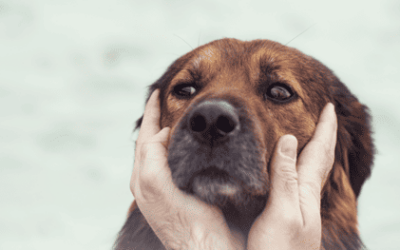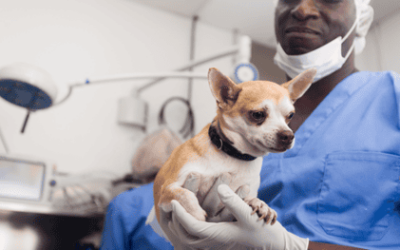How Much Does Surgery Cost For Your Dog?
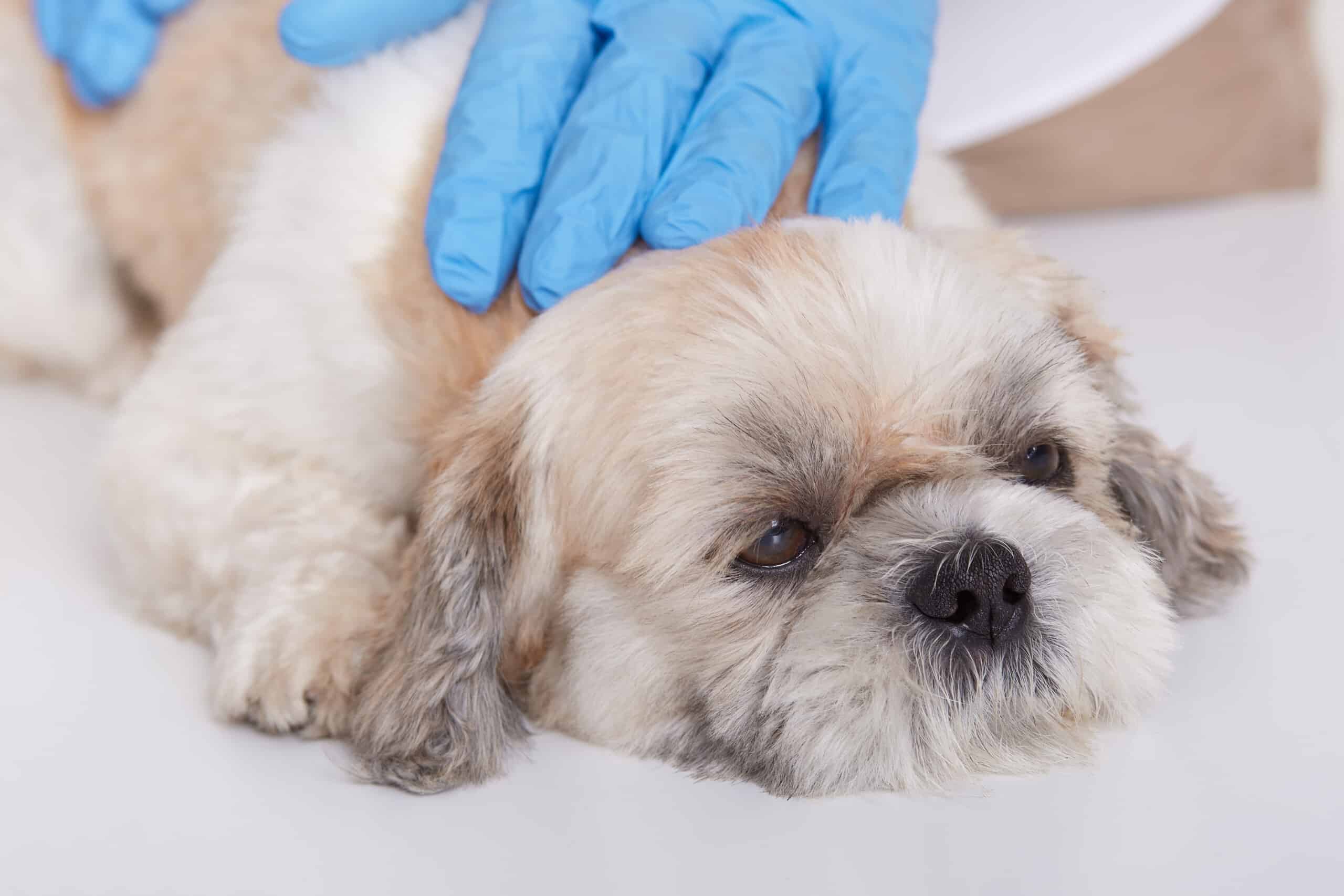
Updated November 15, 2025
Dogs are part of the family, just like all pets, and we understand how deeply you cherish them. They are with you through the ups and downs, expressing their love and excitement in ways that brighten even the toughest days. When your dog suffers from an ailment that requires surgery, you want to return the favor and care for their needs with just as much enthusiasm and devotion as they’ve shown you throughout the years.
Accidents happen, and even the most careful pet owners may face unexpected emergencies. Being prepared for these situations is essential to ensure your pet receives the best possible care without the overwhelming stress of financial uncertainty.
Understanding Dog Surgery: What Every Pet Parent Needs to Know
Dog surgery is a reality that many pet owners may face at some point in their dog’s life, and we want to help you navigate this challenging experience with confidence. Whether it’s a planned orthopedic surgery to address hip dysplasia or a sudden emergency surgery due to an accident, understanding the process can help you make informed decisions for your pet’s health and well-being.
Surgical procedures in veterinary medicine range from routine mass removals to complex surgical repairs of broken bones or torn ligaments. Working with a skilled veterinary surgeon is essential to ensure your dog receives the best care possible and heals properly after the procedure. While surgery can be stressful for both dogs and their families—we know how frightening it is to see your beloved companion go under anesthesia—pet insurance can help ease the financial burden by covering a portion of the surgery costs.
Knowing what to expect, including the types of surgery available and potential complications, can help you feel more confident and prepared as a pet parent during this challenging time.
Types of Dog Surgery: Understanding Your Options
There are several types of dog surgery that your pet may require during their lifetime, each addressing different health concerns that affect your furry friend’s quality of life. Orthopedic surgery is commonly performed to treat issues such as hip dysplasia, cruciate ligament injuries, and broken bones, helping to restore your dog’s mobility and quality of life so they can run and play again.
Surgical repair procedures are used to repair damaged tissues or organs, such as repairing a torn muscle or correcting a hernia that causes discomfort. Emergency surgery is often necessary in life-threatening situations, such as when a dog swallows a foreign body or experiences severe bleeding from an accident—situations that require immediate intervention.
Other surgical procedures include mass removal for tumors that may be cancerous, bladder stone removal that relieves painful urinary issues, and specialized orthopedic procedures like tibial plateau leveling osteotomy (TPLO) for knee injuries. Each type of surgery comes with its own set of risks and potential complications, so it’s essential to have an open and honest discussion with your veterinary surgeon about the best course of action for your dog’s specific needs and overall health.
Cost of Cataract Surgery for Dogs: Restoring Your Pet’s Vision
A cataract is an eye condition that causes cloudy vision, impairing your dog’s ability to see clearly and navigate their world. That cloudiness can be seen when you look at the lens of the eye, creating a milky appearance. This leads to blurred vision and total blindness in some cases, which can be heartbreaking to witness in your beloved companion. Dogs can develop cataracts at any age, depending on factors such as genetics, diabetes, or a nutritional imbalance.
The average cataract surgery for dogs costs $2,500 to $4,000, which can feel overwhelming when you’re already worried about your pet’s health. Does pet insurance cover cataract surgery? Pet insurance will always cover a portion of your veterinary costs, bringing you relief when the unexpected occurs and allowing you to focus on your dog’s recovery rather than financial stress.
Gastropexy Surgery Cost: Emergency Treatment for Bloat
When certain dog breeds eat certain foods too quickly or move around too much immediately after eating, it can lead to their stomach flipping or twisting—a terrifying emergency. This is called Gastric Dilatation-Volvulus (GDV) or bloat. This is a life-threatening emergency and requires immediate surgery to allow the food to move from the stomach into the intestines. It can happen at any stage in a dog’s life, striking without warning.
The surgery required to fix bloat is called a Gastropexy surgery, which flips the stomach back to a safe position and makes some corrections to make bloat less likely to reoccur in the future, giving you peace of mind.
How much does emergency surgery to fix bloat or stomach flipping cost? Expect to pay between $1,500 and $7,500 without insurance—a wide range that depends on the severity of the condition and your location.
Dog Hernia Surgery Cost: Repairing Muscle Wall Issues
Hernias occur in dogs due to age, trauma, or congenital issues that were present from birth. Hernias occur when the contents of a dog’s intestine cause a hole or stretch the muscle wall, creating a bulge that can be painful. While hernia surgeries are common in dogs, the cost of dog hernia surgery is substantial. Expect to pay an average of $1,600 to repair this condition and keep your furry friend comfortable.
Anterior Cruciate Ligament (ACL) and Canine Cruciate Ligament (CCL) Dog Surgery Cost
When your dog injures the ACL or CCL, they cannot walk without significant pain—something that’s difficult to watch as they struggle with mobility. If the injury requires surgery, you can choose between extra-capsular repair, tibial plateau leveling osteotomy (TPLO), or triple tibial osteotomy (TTO), each with different approaches and recovery times.
A dog’s broken leg is another common orthopedic emergency that may require surgical intervention, and the costs can vary depending on the severity and type of treatment needed.
ACL surgery in dogs costs about $3,000 per knee, and the cost of dog cruciate ligament surgery can increase depending on the type of surgery you choose and your dog’s size.
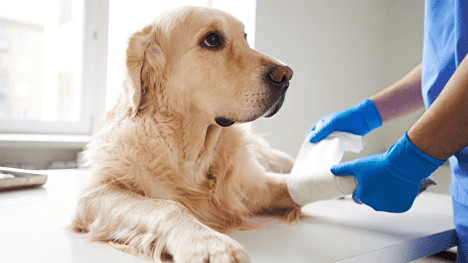
Most insurance plans require a waiting period before they cover a TPLO surgery dog cost or any other type of surgery. Can I get pet insurance before surgery? Prepare now for the unexpected by signing up for pet insurance while your dog is healthy and well. A dog’s age can influence the type of surgery recommended, the recovery process, and the overall cost, as older dogs may require more careful monitoring and tailored care.
Inguinal Hernia Dog Surgery Cost: Treating Groin Area Hernias
Inguinal hernias in dogs can be congenital or caused by trauma, obesity, or pregnancy. The inguinal hernia occurs near the groin and can stretch and weaken the muscle wall from the weight of pregnancy or a blunt force to the area. If the hernia becomes life-threatening and prevents the dog from urinating normally, it must be treated with surgery to avoid serious complications.
How much does inguinal hernia surgery for dogs cost? The average cost for an inguinal herniorrhaphy in dogs is $2,300, an investment in your pet’s health and comfort.
Dog Leg Amputation Cost: When It’s Necessary
If your dog ever needs a leg amputation to stop the spread of disease or free them from chronic pain, you can plan for a leg amputation surgery. In some cases, a severe broken leg that cannot be repaired may result in the need for amputation. The average cost of a dog leg amputation is $500 to $1,000, although dogs adapt remarkably well to life on three legs with your support and patience.
Dog Eye Removal Cost: Addressing Serious Eye Conditions
If your dog requires eye removal due to infection, advanced disease, or trauma, expect to pay the average cost of eye removal surgery for dogs, which ranges from $400 to $750. A dog eye removal cost is well worth it, so they can continue a good quality of life with the other working eye and be free from pain.
Dog Airway Obstruction Surgery Cost: Life-Saving Emergency Intervention
When your dog ingests something that blocks the airway, this calls for immediate emergency surgery—a terrifying situation for any pet parent. Without pet insurance, a dog’s obstruction surgery cost can be overwhelming and may force difficult decisions.
Depending on the item blocking the airway and how far it has traveled, the cost of dog obstruction surgery ranges from $2,000 to $10,000.
Hip Dysplasia in Dogs Surgery Cost: Restoring Mobility
Your dog may exhibit signs of hip dysplasia with age, although some breeds are predisposed to develop it earlier due to genetic factors. Hip dysplasia occurs when the ball of the joint slips out of the hip socket, typically due to the socket not developing correctly and being too shallow—a condition that causes significant pain and affects mobility.

If your dog is reluctant to exercise, has stiff back legs, or runs with a characteristic bunny hop, consider hip dysplasia surgery options to restore their comfort. The cost of hip surgery for dogs can differ significantly, with the average cost being $5,000 per hip—a substantial investment in your beloved companion’s quality of life.
Intervertebral Disc Disease (IVDD) Surgery Cost
Intervertebral disc disease manifests in dogs of specific breeds after suffering from a herniated disc. A ruptured disc causes spinal cord compression, bringing on debilitating symptoms that can affect your dog’s ability to walk or even move.
You can treat IVDD with surgery to relieve the pressure and restore function. How much does dog IVDD surgery cost? The average fee for IVDD surgery is $1,500 to $4,000 without insurance. How much does herniated disc surgery cost with insurance? Pet insurance will cover a percentage of your vet fees, as outlined in your policy, providing significant financial relief during a stressful time.
Dog Slipped-Disc Surgery Cost
How much does a dog’s slipped-disc surgery cost? When a slipped disc causes discomfort and disability in your dog, affecting their mobility and quality of life, you may choose to consider surgery. Expect to pay $1,500 to $4,000 to address this painful condition.
Dog Intestinal Blockage Surgery Cost: Emergency Treatment
Look for signs of intestinal blockage in your animal if they are in pain, not eating, and refraining from exercise—all warning signs that something is seriously wrong. Intestinal blockages can be caused by a dog swallowing something that is too large for them to pass in a normal bowel movement or that gets stuck in their intestines and cannot be digested. Common causes of intestinal blockage can include items such as toys, bones, rocks, or articles of clothing like socks or shoelaces.
If your dog tends to eat or chew household objects, you’ll want to keep a close eye on them to ensure they aren’t showing symptoms of intestinal blockage. How much does dog blockage surgery cost? You can pay up to $7,000 without insurance—a staggering amount when you’re already worried about your pet.
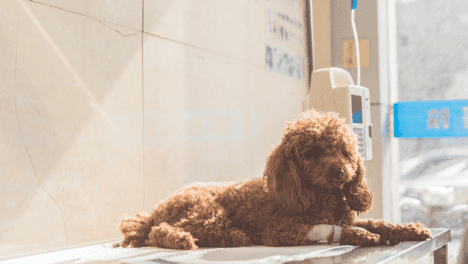
Depending on your dog’s size and condition, you may wonder what does dog anesthesia cost? General anesthesia is used to keep your dog fully unconscious and pain-free during surgery, with continuous monitoring of vital signs to ensure safety throughout the procedure. The fee can range between $90 and $1,200 depending on the length and complexity of the surgery. Be sure to talk with your vet about the safety of putting your dog under and what to expect when the anesthesia wears off, so you feel prepared for the recovery process.
Dog Spinal Surgery Cost: Delicate Procedures for Back Health
Any form of spinal surgery for dogs requires a careful and skilled process performed by experienced veterinary surgeons. Whether your dog suffers from a ruptured disc or has tissue compressing the spine causing pain and paralysis, you will need to learn about dog spinal surgery costs.
For most dogs, you can pay $1,500 to $4,000 to complete this essential surgery that can restore mobility and comfort.
Dog Leg Surgery Cost: Treating Dislocations and Fractures
You can take your dog to the vet for treatment if your dog has a dislocated leg that’s causing pain and limping. A dog’s broken leg is a common emergency that may require surgical intervention, and timely veterinary care is crucial for the best outcome. How much does a dog dislocated leg cost to treat? The vet can place the leg back into its proper position for the fee of $600 or so. If your dog requires surgery due to a broken bone, such as a dog’s broken leg with multiple fractures, the surgery fee will be closer to $2,000.
Dog Back Surgery Cost: Addressing Spinal Issues
Your dog’s mobility depends on a pain-free and healthy spine and back that allows them to move freely. How much does dog back surgery cost? Whether the vet fixes a herniated disc or misalignment that’s causing discomfort, you can expect to pay $1,500 to $4,000 to restore your beloved companion’s quality of life.
Dog Foreign Body Surgery Cost: Removing Swallowed Objects
If your dog swallows a foreign object that will not pass through the digestive system naturally, it’s time to take them to the vet immediately. How much does a dog foreign body surgery cost? Depending on the size of the dog, the foreign object, the time under anesthesia, and how far it travels down from the mouth opening, you can pay up to $7,000 without insurance—a significant expense during an already stressful emergency.
Dog Sedation Cost During Surgery
What is the dog sedation cost during surgery? Pay up to $350 to keep your dog still and unconscious during significant surgeries, ensuring they remain comfortable and pain-free throughout the procedure.
Dog Orthopedic Surgery Cost: Comprehensive Joint Care
Various types of orthopedic surgeries for your pet will keep them mobile and pain-free, allowing them to enjoy their favorite activities again:
- How much does a hip replacement cost? Up to $7,000 per hip
- How much does dog knee surgery cost? $1,000 to $5,000 per knee
- How much does a dog dislocated shoulder treatment cost? $1,000 to $5,000
- How much does a dog orthopedic surgery cost? Depending on the joint, you can pay up to $7,000 per surgery
- How much does a dog knee replacement cost? Up to $5,000 per knee
A broken leg is a frequent orthopedic emergency in dogs, and the cost for surgical repair can vary widely depending on the complexity of the fracture and your dog’s size.
Dogs can incur orthopedic injuries from over-exercise, old age, or genetics. Talk with your vet about the best treatment for your pet’s specific situation.
Dog Tumor Surgery Cost: Addressing Growths
Dogs grow tumors just like humans, which can be frightening to discover. The tumors can be cancerous or noncancerous, but many times they need to be removed for your dog’s health and comfort. How much does dog tumor surgery cost? For invasive surgeries that require extensive work, the price can be $2,000 or more.
Circumstances That May Result in Your Dog Needing Surgery
Your dog can experience several ailments requiring surgery during their lifespan, and we want you to be prepared for these possibilities. Here are some of the various surgeries for dogs:
Stitches for lacerations from accidents or fights, tumor removal to address cancerous or benign growths, joint reparation to fix damaged cartilage or ligaments, joint replacements when damage is too severe to repair, eye surgery for cataracts or other conditions, broken bones from falls or trauma, bladder stones that cause painful urination, and intestinal blockages due to foreign objects your dog shouldn’t have eaten.
Accidents happen, and it’s important to be prepared for unexpected emergencies that may require surgery so you can act quickly when your beloved pet needs help.
Unfortunately, you cannot prevent many of these conditions despite your best efforts. It is essential to have pet insurance so that you are prepared to pay for your dog’s treatment when the time comes, without having to make heartbreaking decisions based on finances alone.
Educating Yourself About the Risks Involved in Dog Surgery
In this modern age, veterinary medicine is very advanced and continues to improve every year. Veterinary surgeons are highly trained to minimize risks and ensure the safety of your dog during surgery using state-of-the-art equipment and techniques. Although risks are minimized during surgery, there are still risks pet parents should consider and be aware of before the procedure.
Infection: A Common Post-Surgery Concern
Infections may still arise even if the surgery is performed correctly in sterile conditions with proper protocols. Therefore, always be on the lookout for redness around the incision areas that’s spreading or worsening. If there is pus or increased swelling that doesn’t improve, contact your vet immediately. If your dog acts differently than expected while recovering from surgery—showing unusual lethargy, loss of appetite, or fever—bring them in for an examination without delay.
Side Effects of Anesthesia
Anesthesia can cause a post-op cough due to intubation during the procedure. Or your dog may experience blood pressure fluctuations during surgery that require monitoring. After surgery, they can contract aspiration pneumonia if fluid enters the lungs. Watch for signs of these side effects and take action immediately if any arise to protect your beloved companion.
Complications and Additional Costs: What to Expect
While advances in veterinary medicine have made dog surgery safer than ever, there are still potential complications that pet owners should be aware of to make informed decisions. Complications can include infection at the incision site that requires antibiotics, blood pressure fluctuations during surgery that need management, or adverse reactions to anesthesia such as aspiration pneumonia or post-op cough.
Some dogs may require additional pain medications or physical therapy to support the recovery process and help them heal properly and regain mobility. In more complicated cases, such as a more complicated fracture with multiple breaks or unexpected findings during surgery, the overall surgery cost can increase due to extended anesthesia time, extra surgical correction, or additional diagnostic tests like X-rays or blood work to assess the situation.
Beyond the initial surgery costs, pet parents should also budget for follow-up appointments to monitor healing, post-operative care including medications and bandage changes, and any special equipment like an Elizabethan collar to prevent your dog from disturbing the incision site. Recovery time can vary depending on your dog’s age, overall health, and the type of surgical procedure performed.
In some cases, older dogs or those with underlying health issues may need extra monitoring or support during the healing process to ensure the best outcome. It’s important to discuss all potential costs and complications with your veterinary team ahead of time, so you can plan for the best possible outcome for your pet and avoid financial surprises during an already stressful time.
Preparing for Dog Surgery: What to Do Beforehand
Before surgery, your dog should fast, starting at 10 pm the night before to ensure their stomach is empty. Sometimes, they can drink water in the morning depending on your vet’s instructions. The vet may administer light sedation to prepare your pup for surgery, including taking blood pressure and running vitals to ensure they’re stable. The veterinary team will also monitor your dog’s body temperature as part of the pre-surgical assessment to ensure safety throughout the procedure.
They will also get pre-surgery bloodwork to ensure your dog is healthy enough for the procedure and to identify any potential risks before anesthesia is administered.
During the Dog Surgery: What Happens
During the surgery, the vet will monitor your dog’s body temperature along with other vital signs like heart rate and oxygen levels to ensure they are comfortable and safe throughout the procedure. You can remain in the office or return once your dog is ready for pickup, depending on your preference and the length of the surgery.
The Period After Dog Surgery: Recovery at Home
Each surgery will vary in how long your dog will need to remain at the hospital under observation for safety and monitoring.
Once your pet is home, limit activity to prevent injury and watch for any warning signs of poor health or complications. It is important to monitor your pet’s health closely during the recovery period and contact your vet if any concerns arise—no matter how small they seem. In addition, keep sutures covered to keep them free of germs and keep your dog from biting them off with an Elizabethan collar or surgical suit. Arrange your schedule so your dog can receive supervision for at least 24 hours after surgery, as this is the most critical period.
Watch for these warning signs that require immediate veterinary attention:
Vomiting or diarrhea that persists, loss of appetite for more than 2 days, refusal to drink for more than 1 day, weakness or inability to stand, nasal discharge that’s colored or excessive, and depression or lethargy that’s unusual for your pet.
Contact your vet with any questions or concerns about your beloved companion’s recovery. You can never be too safe when it comes to your dog’s health.
Changing Dog Bandages and Cleaning Incisions
Keep the incisions covered and protected, and do not get your dog wet during recovery time as this can introduce bacteria. Follow cleaning instructions from your vet carefully when you change the bandages. Always wash your hands thoroughly and use sterile bandages when caring for your pet to prevent infection.
Water and Food Intake After Surgery
After surgery, your dog should slowly return to its normal diet to avoid digestive upset. Limit the amount of water and food for the first 8 hours after surgery while the anesthesia wears off. Your vet will provide any special instructions regarding food or drink while your dog recovers. Sometimes it is advised that your dog be fed measured quantities of food and water during recovery to prevent vomiting or complications.
Feeding instructions will vary depending on your dog’s situation and the type of surgery performed, so be sure to fully discuss post-surgery diet and feeding instructions with your vet before you leave the clinic. A special diet may be required if your dog had intestinal surgery or other digestive system procedures.
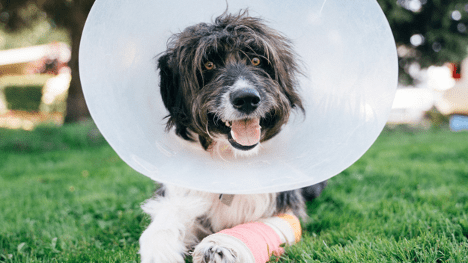
Dog Recovery Period
Your vet may send you home with a cone to keep your dog from biting off the sutures, though we know how much dogs hate wearing them. Other options are undershirts or surgical suits that cover the stitches and are more comfortable to wear, allowing your dog to rest better.
The recovery period for many surgeries can last several weeks, depending on the procedure and your dog’s condition and age. You should discuss pain management options during recovery with your vet to keep your beloved companion comfortable. Your vet may prescribe painkillers, supplements, or anti-anxiety medication to help your dog stay pain-free and calm during their recovery process.
Beyond prescription medications, you can also try home remedies to help your dog recover more comfortably. One example would be CBD treatment to calm your dog and help relieve pain during surgery recovery. Remember to discuss the use of CBD treatment with your vet before you start to ensure that it is safe and appropriate for your dog’s specific needs and won’t interact with other medications.
What Are the Ways of Paying for Dog Surgery?
If surgery comes up as a big shock to your budget, there are ways to pay for the unexpected surgery charges without having to make impossible choices. Many veterinary clinics offer payment plans or accept CareCredit, which can help pet owners manage the cost of surgery over time rather than all at once.
0% APR Credit Card
Charge the pet surgery costs to a credit card with 0% interest for an initial period, often 12-18 months. Then you can take your time paying down the fees without incurring interest charges that add to your burden.
Veterinary Financing
Many vets offer financing options for surgery fees through CareCredit or other financing services designed specifically for medical expenses. Break up the cost into a monthly payment schedule to lessen the burden on your finances and make treatment affordable.
Personal Loan
Take out a personal loan with a fixed interest rate, payment plan, and fixed loan length from your bank or credit union. Then you can pay off your surgery costs over a few years if needed, providing flexibility during a difficult time.
Pet Insurance: Overcoming the Financial Hurdles of Pet Surgery
One of the best ways to cut surgery costs is to sign up for pet insurance before the ailment occurs and while your dog is healthy. Pet insurance provides peace of mind for the pet owner by reducing the financial burden of unexpected surgeries and allowing you to focus on your dog’s health rather than costs. No one ever plans to bring their dog in for emergency service or face a cancer diagnosis.
Will My Pet Insurance Plan Cover the Cost of Veterinary Surgery?
You can choose how comprehensive you would like your plan to be based on your budget and needs. Choose a dog health insurance plan that covers accidents and illnesses for comprehensive protection. Or choose a plan that will cover accidents only if you’re on a tighter budget.
Customize your plan with a deductible, and co-insurance payments that work for your family’s financial situation.
What Does Odie Pet Insurance Cover?
Pet insurance covers various veterinary expenses, providing financial protection and peace of mind for pet owners. Here are the details of the coverage options offered by Odie Pet Insurance:
Illness & Injury Plan
The Illness & Injury Plan is an all-inclusive insurance plan designed to cover a wide range of medical needs for your pet. This plan includes comprehensive coverage for various illnesses, injuries, and veterinary services. Some of the covered items include:
- Veterinary exams and consultations
- Diagnostics (e.g., X-rays, lab tests)
- Prescribed medications
- Surgeries and hospitalization
- Rehabilitation, acupuncture, or chiropractic treatments
- Medically necessary supplies
- Euthanasia and cremation
The Wellness Plan
The Wellness Plan is a monthly membership that focuses on preventive care and covers routine veterinary services.
- Provides reimbursements for routine care items such as wellness visits (exams and vaccines), testing and parasite prevention, dental cleanings and at-home dental care, vitamins, supplements, and more
- Through Odie’s partnership with Petivity, a leader in smart pet products and proactive care, Wellness Plan members can also receive reimbursements on Petivity devices and health kits, as well as eligible Purina food and supplements.
- Total reimbursement up to $700 per year.

FAQs
How much does dog surgery typically cost, and what affects the price?
Surgery costs range from $500 to $7,000+, depending on several factors, including complexity, geographic location (urban areas cost more), dog size (larger dogs need more anesthesia), type of veterinary facility, surgeon experience, whether the surgery is emergency or elective, and the need for pre- and post-operative care (diagnostics, hospitalization, follow-ups).
What do specific common surgeries cost?
- Spay/Neuter: $340-$1,500 (neutering $200-$800, spaying more expensive)
- ACL/CCL: ~$3,000-$4,000 per knee
- Emergency bloat: $1,500-$7,500
- Hernia: ~$1,600
- Ear canal (TECA): $3,500-$4,400
- Tooth extraction: Few hundred to $1,000+
- Cataracts: Several thousand dollars
What additional costs should I expect beyond the surgery?
Diagnostic tests (X-rays $75-$250, ultrasounds $300-$600, MRIs $1,500-$2,500), pre-operative exams, anesthesia, medications, overnight hospitalization if needed, follow-up visits, and post-surgical supplies (E-collars, bandages, special diet).
What are the risks and recovery expectations?
- Common risks: Infection (most common—watch for inflammation, redness, pus) and anesthesia reactions (post-op cough, blood pressure changes).
- Recovery: 10-14 days for spay/neuter, weeks to months for ACL repair. Requires restricted activity, pain medication, wound monitoring, E-collar use, and immediate vet contact for complications.
Does pet insurance cover surgery?
Yes. Odie’s Illness & Injury Plan covers accidents, illnesses, hereditary/congenital conditions, emergencies, cancer, diagnostics, and hospitalization. NOT covered: pre-existing conditions, elective cosmetic procedures, breeding-related issues. Spay/neuter covered under Wellness Plus Plan ($535/year). With 90% reimbursement and $250 deductible, a $3,000 ACL surgery costs you only $525.
When should I get pet insurance, and how can I manage costs?
Get insurance as early as possible, before surgery is needed. Once conditions develop, they’re pre-existing and not covered. Odie offers customizable plans ($250 and $500 deductibles,70% or 90% reimbursement, $10,000 annual limit). Wellness Plan covers preventative care to catch issues early.


